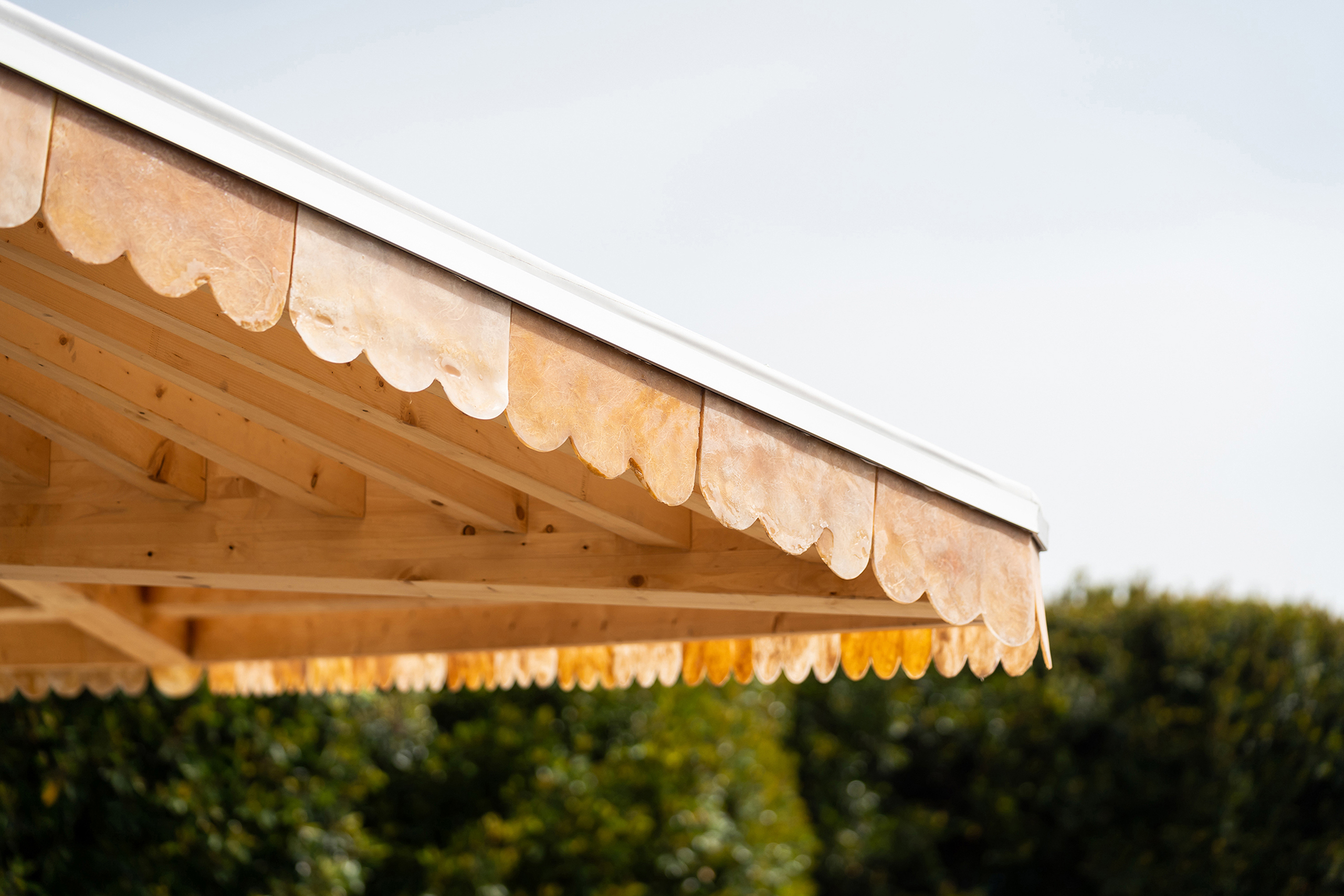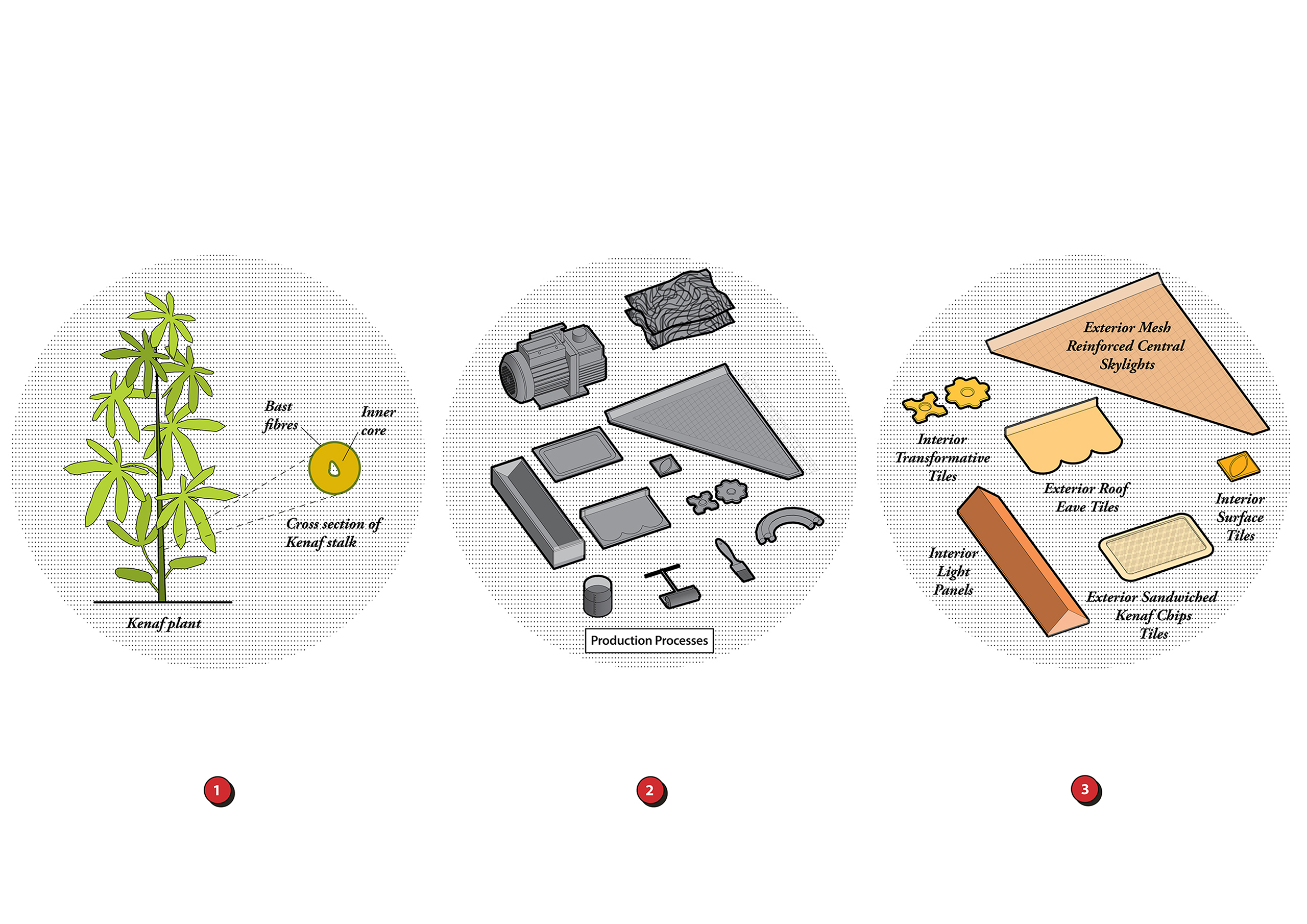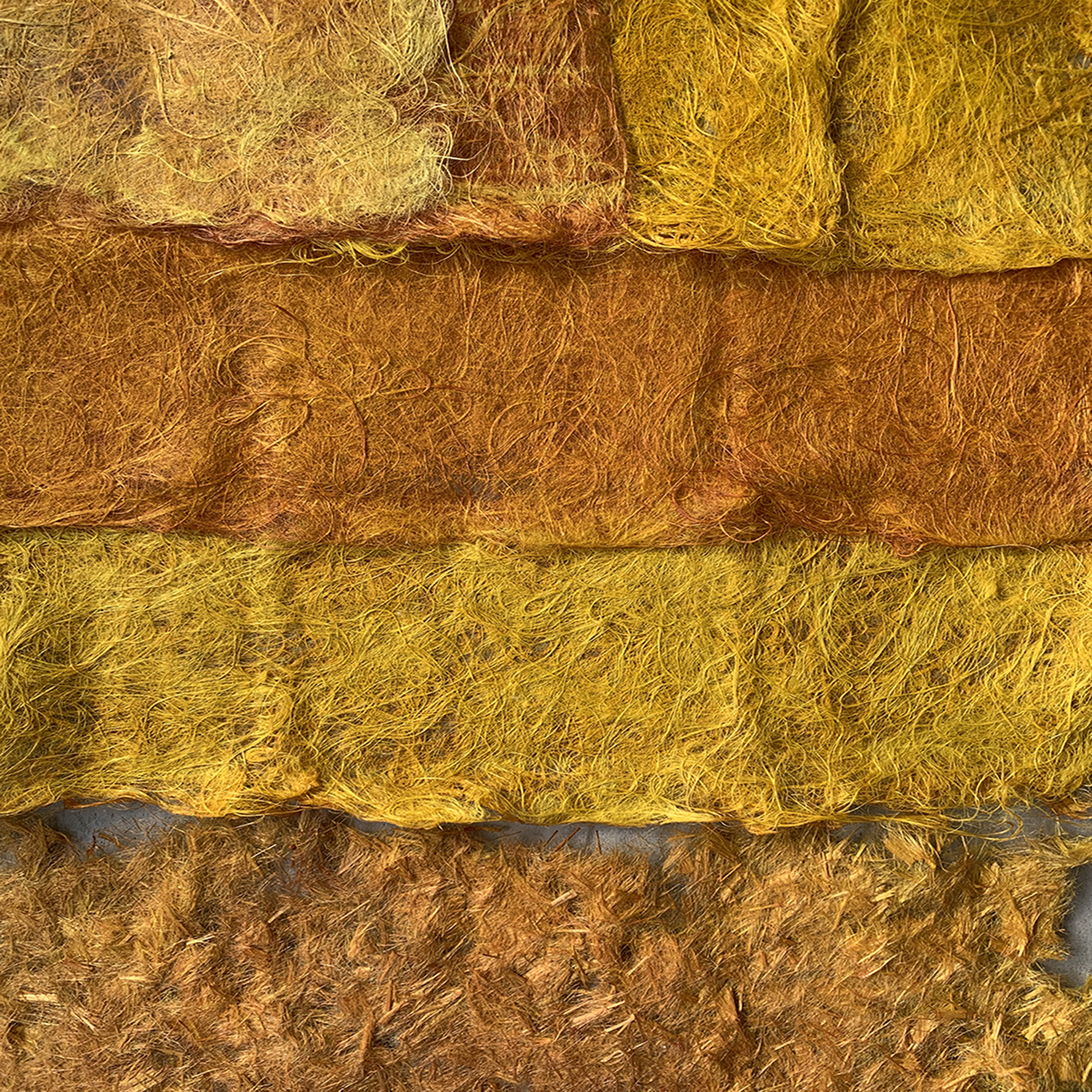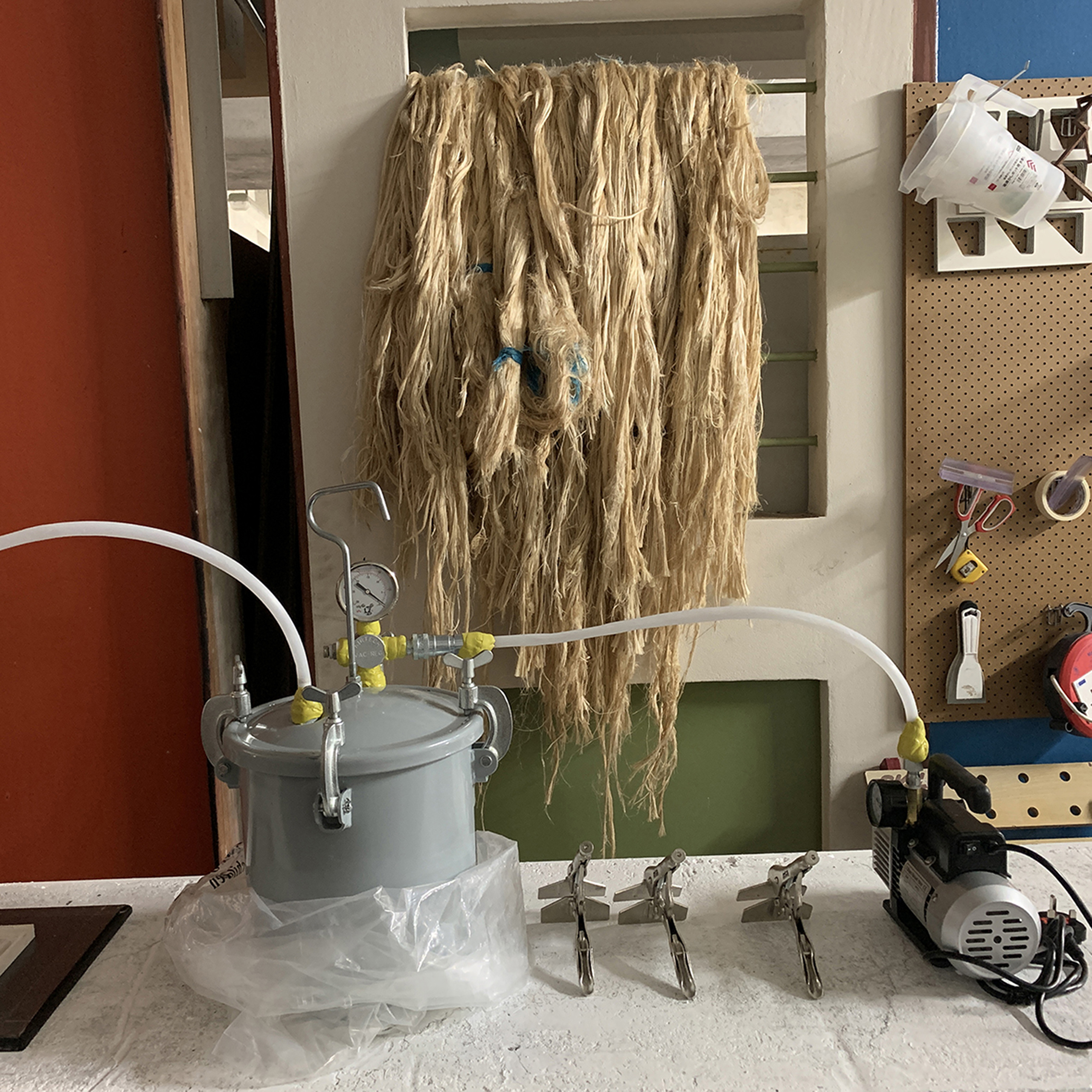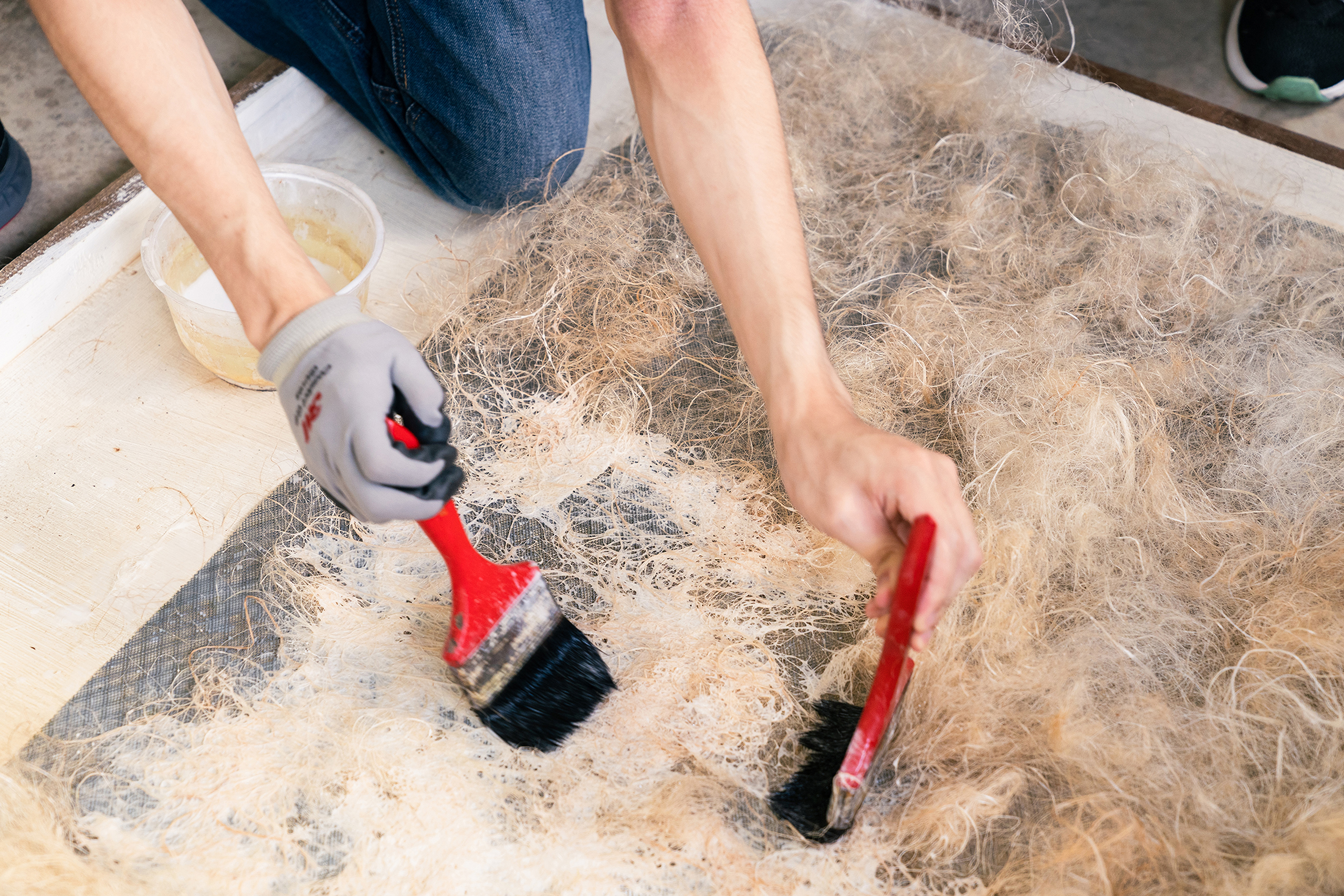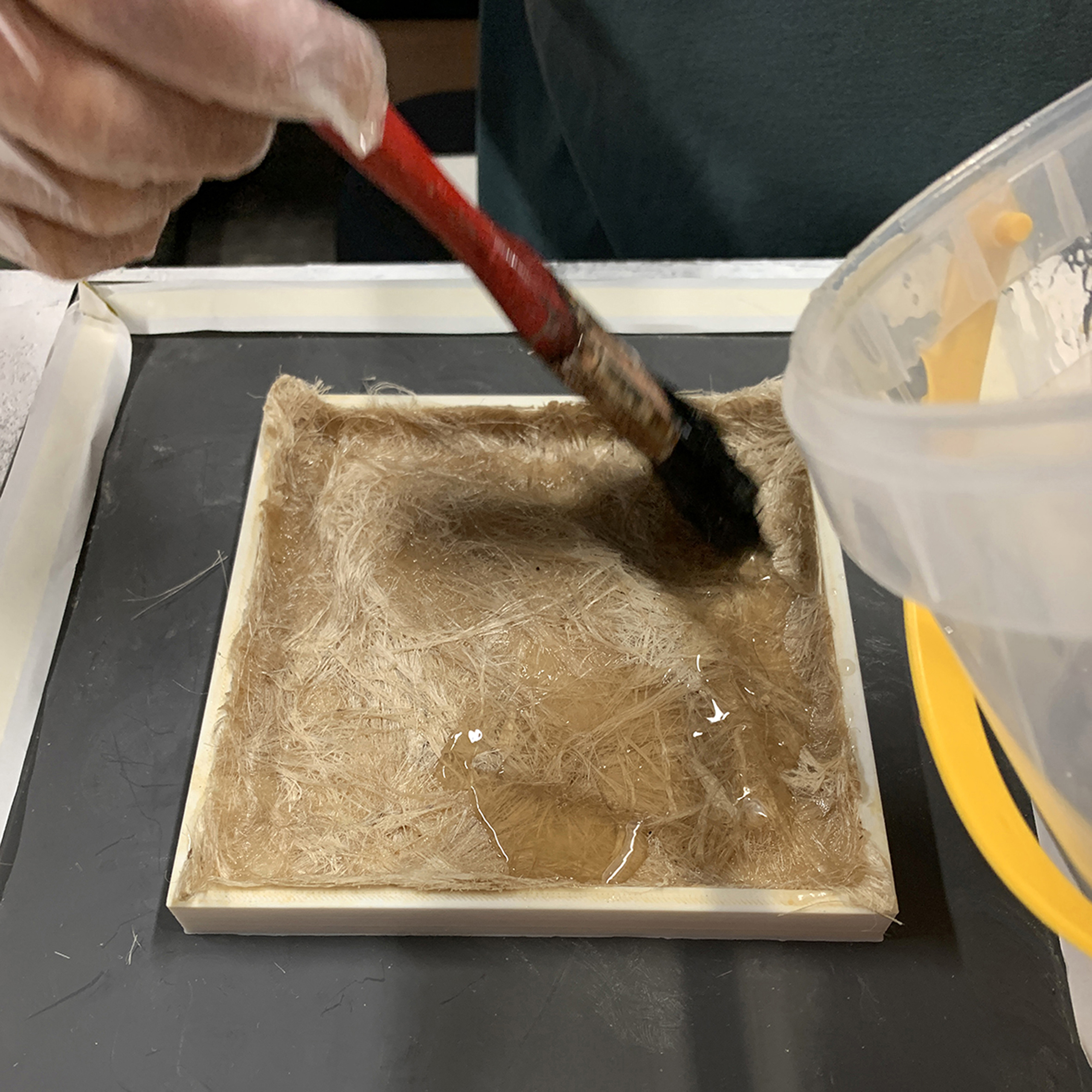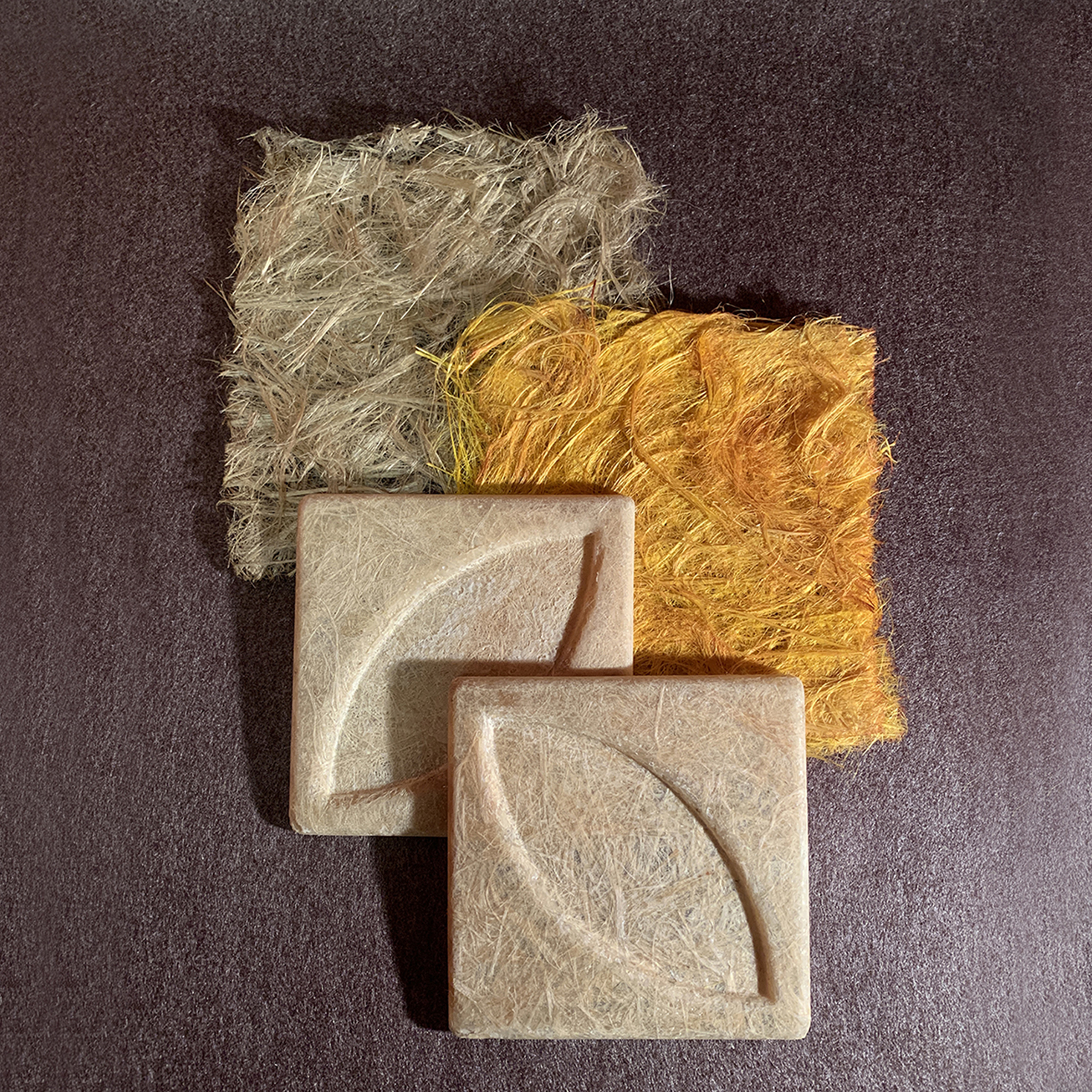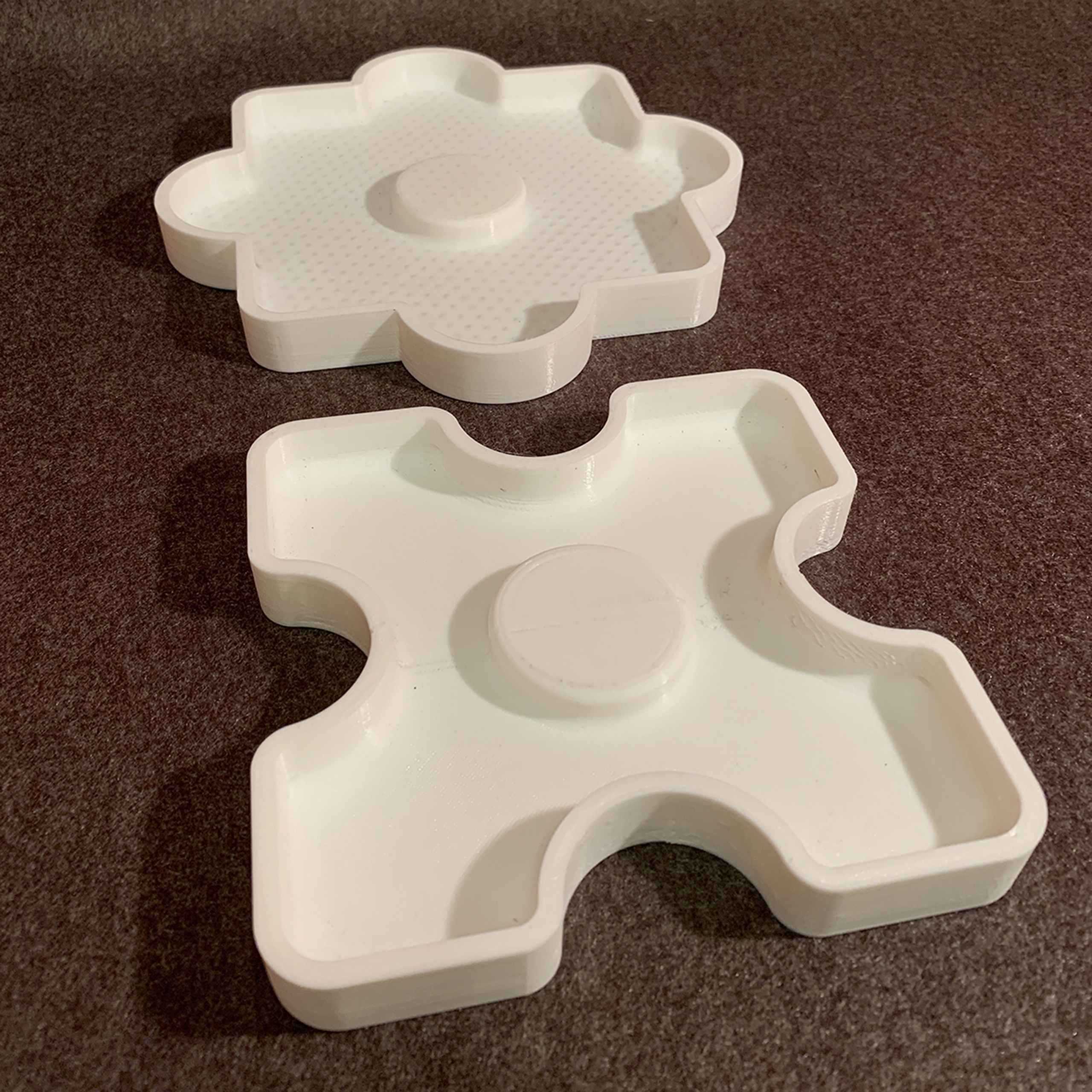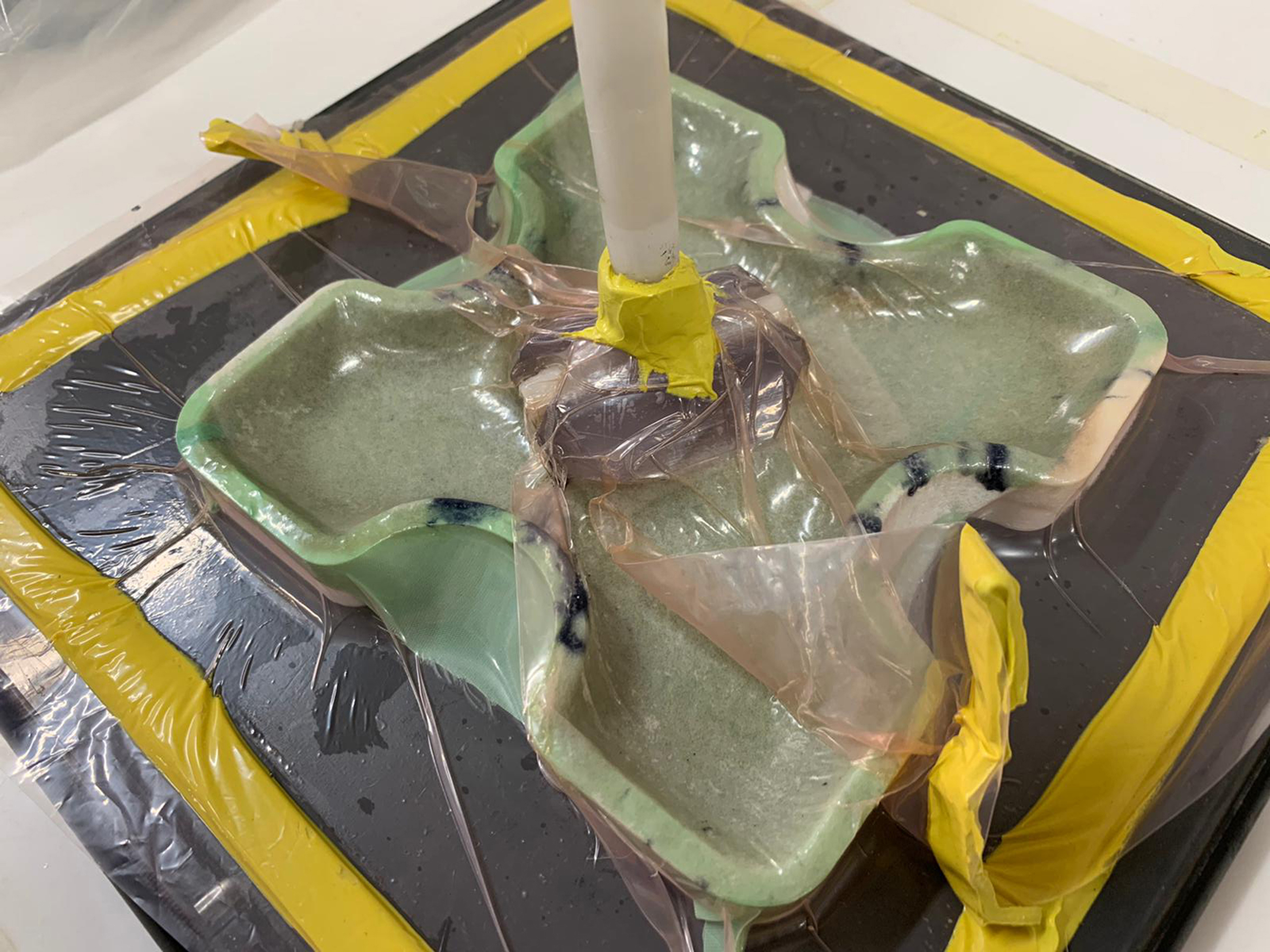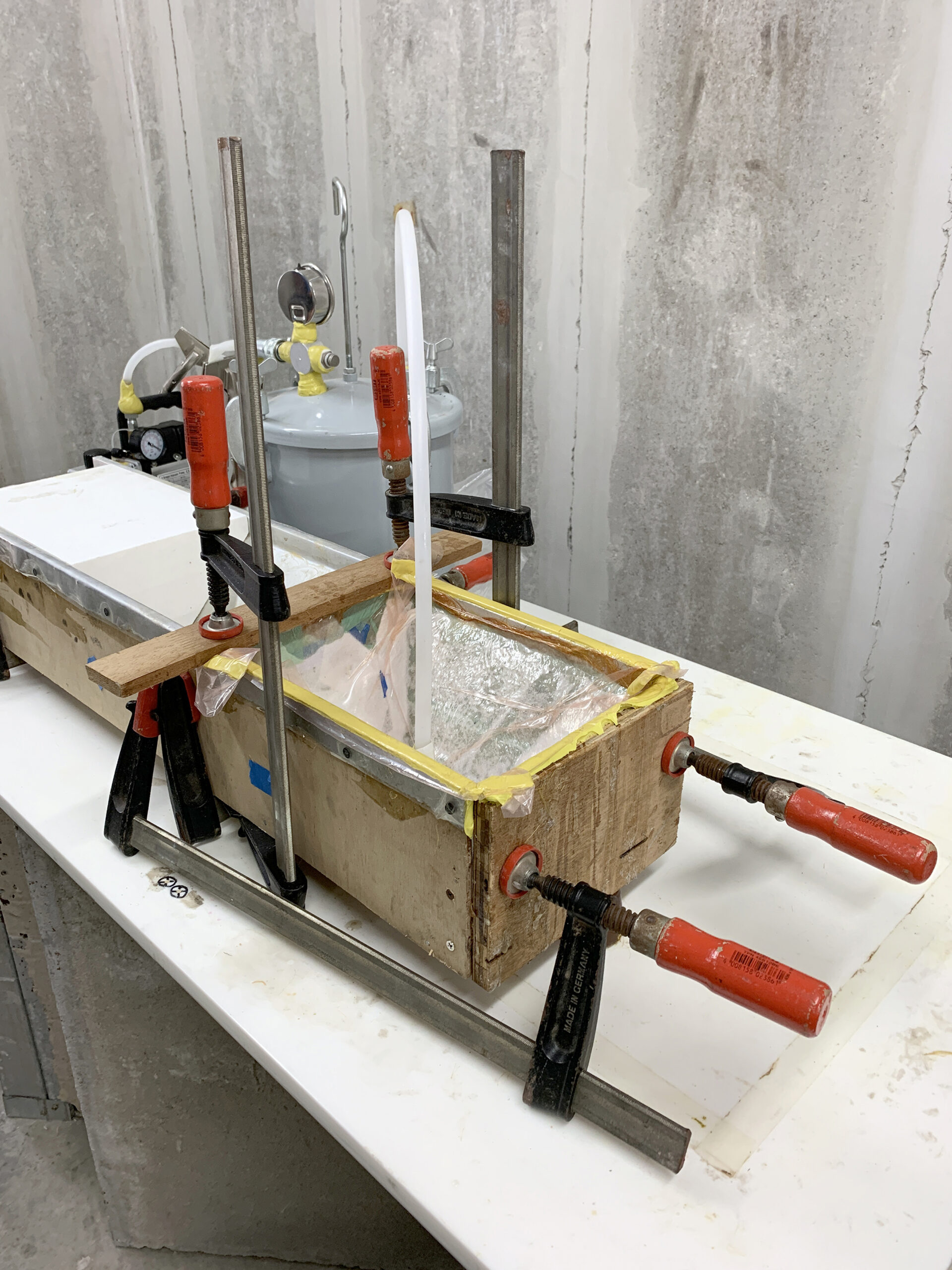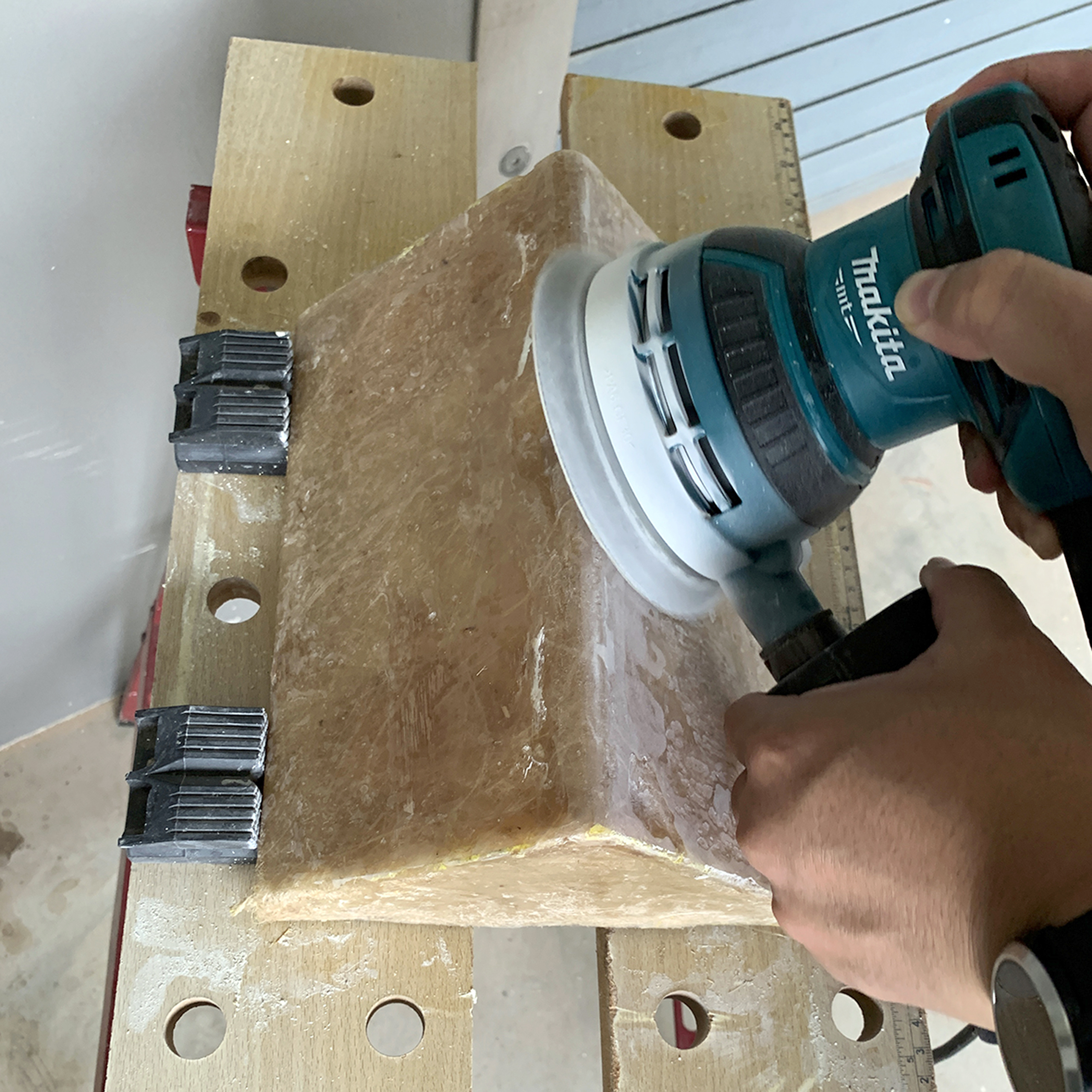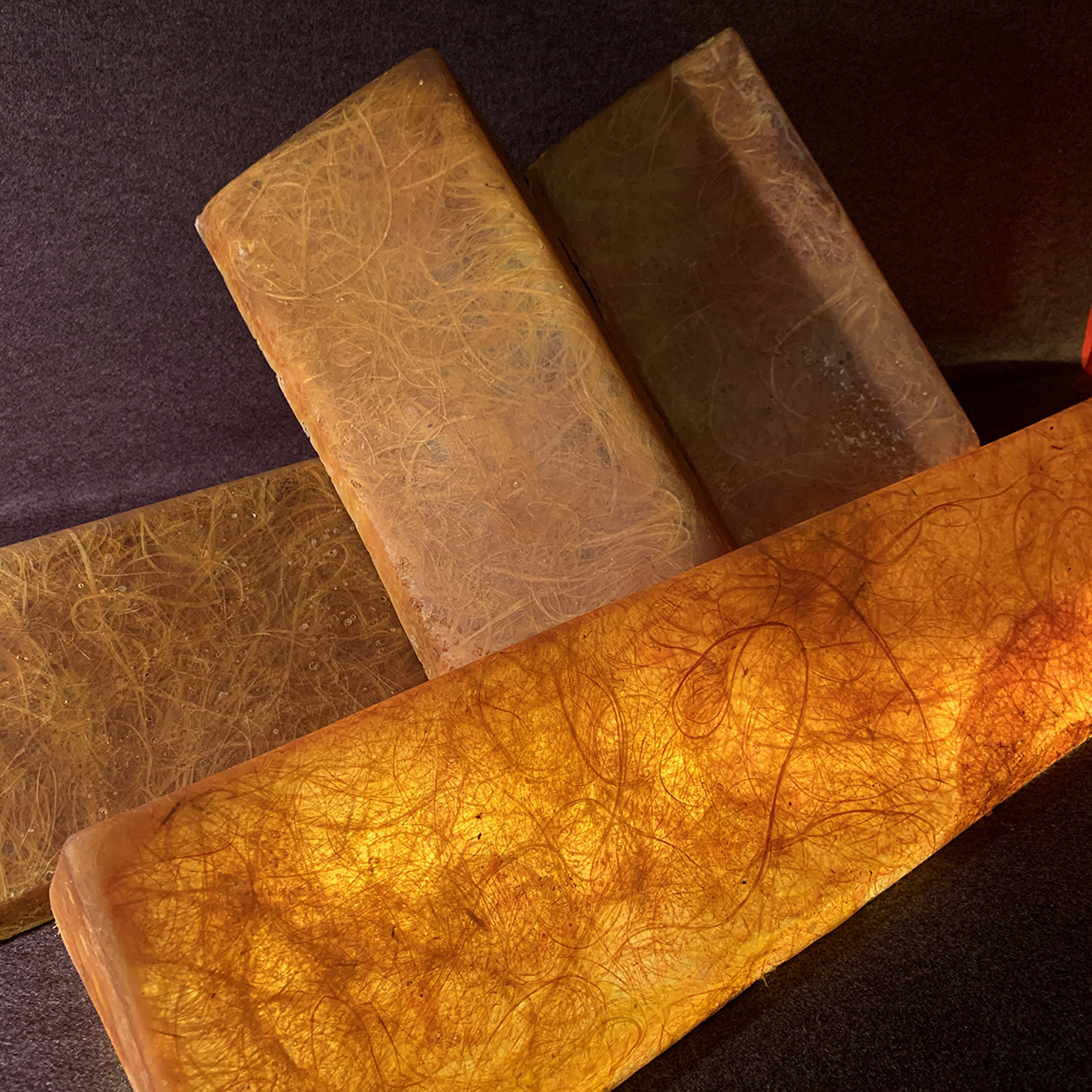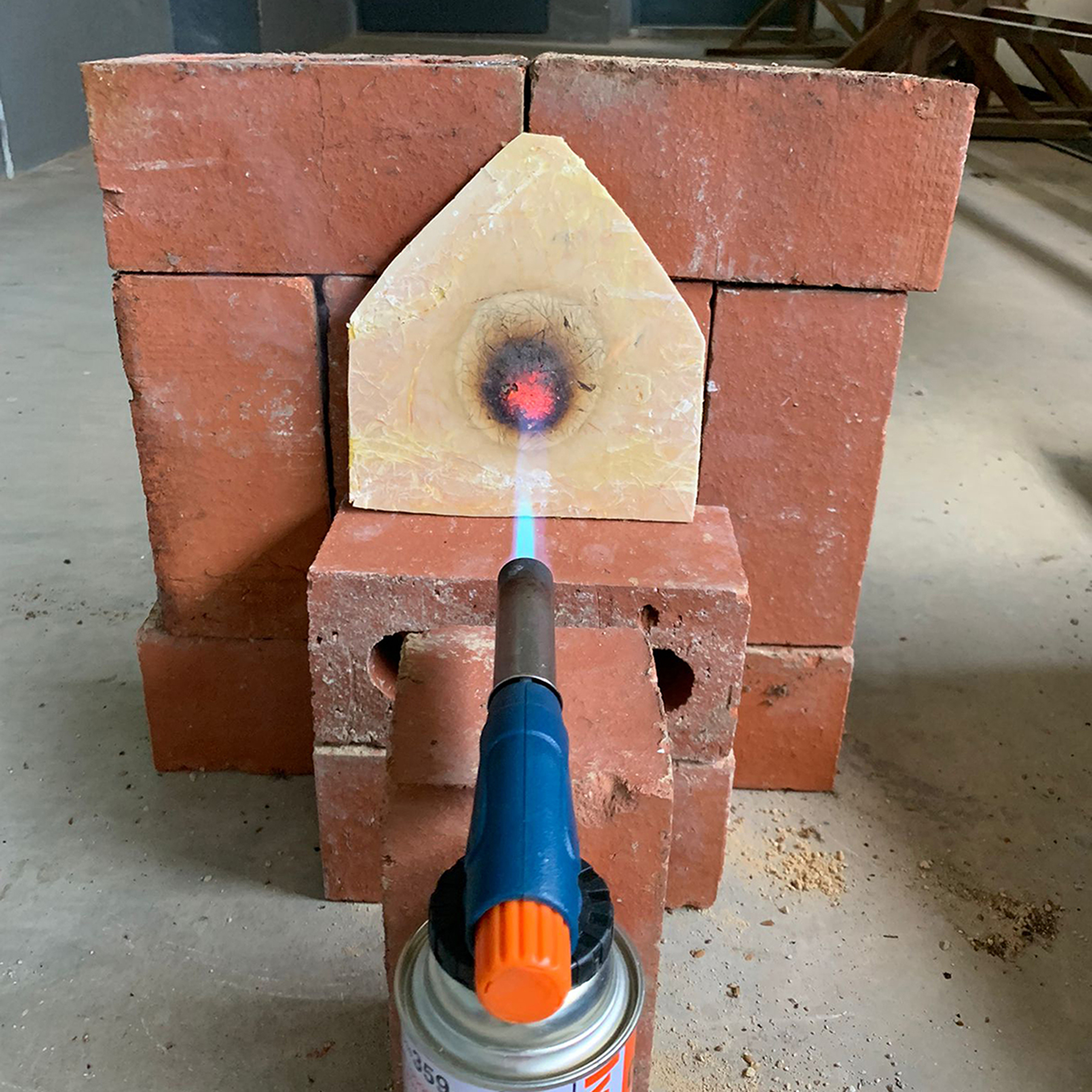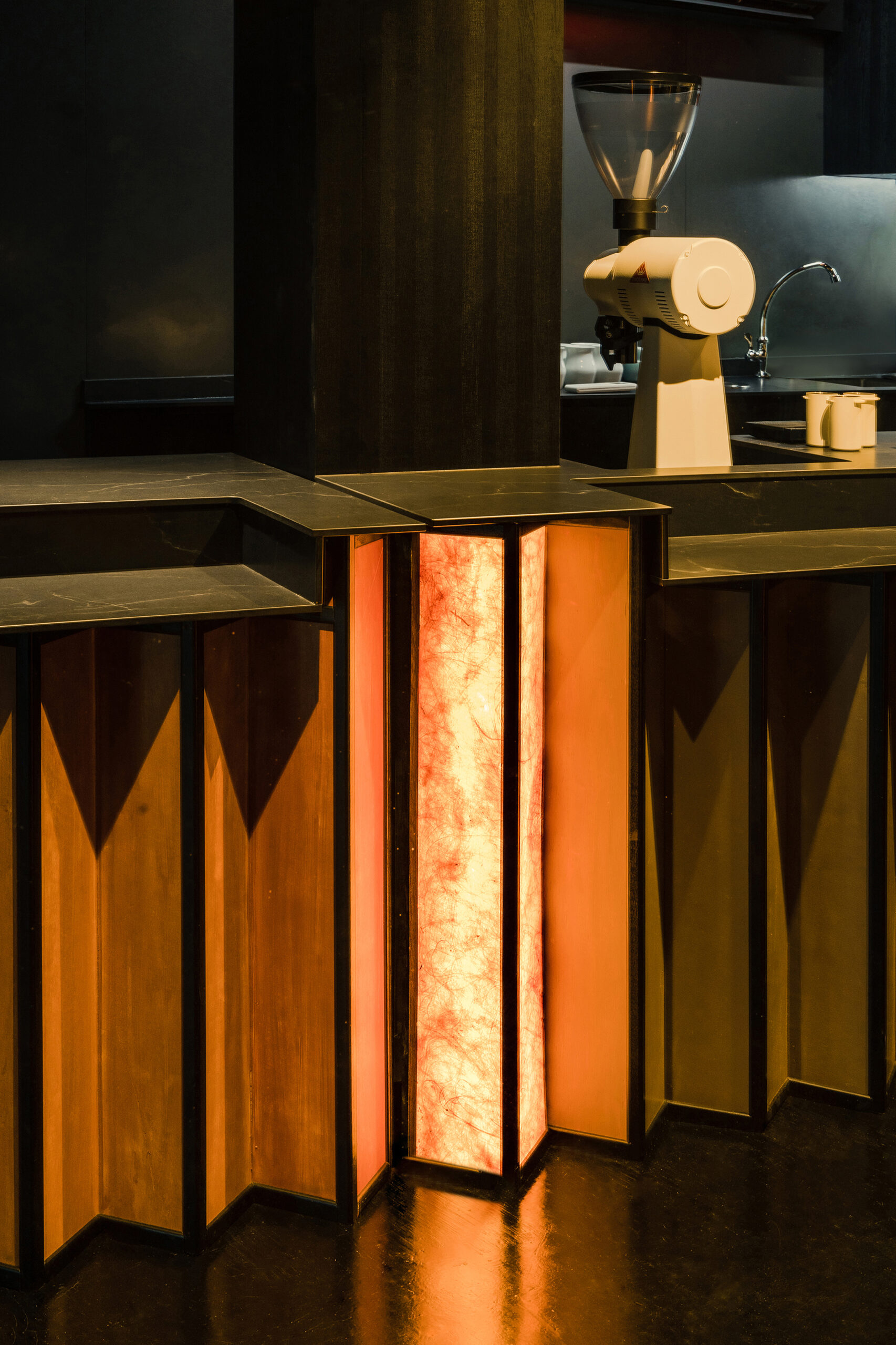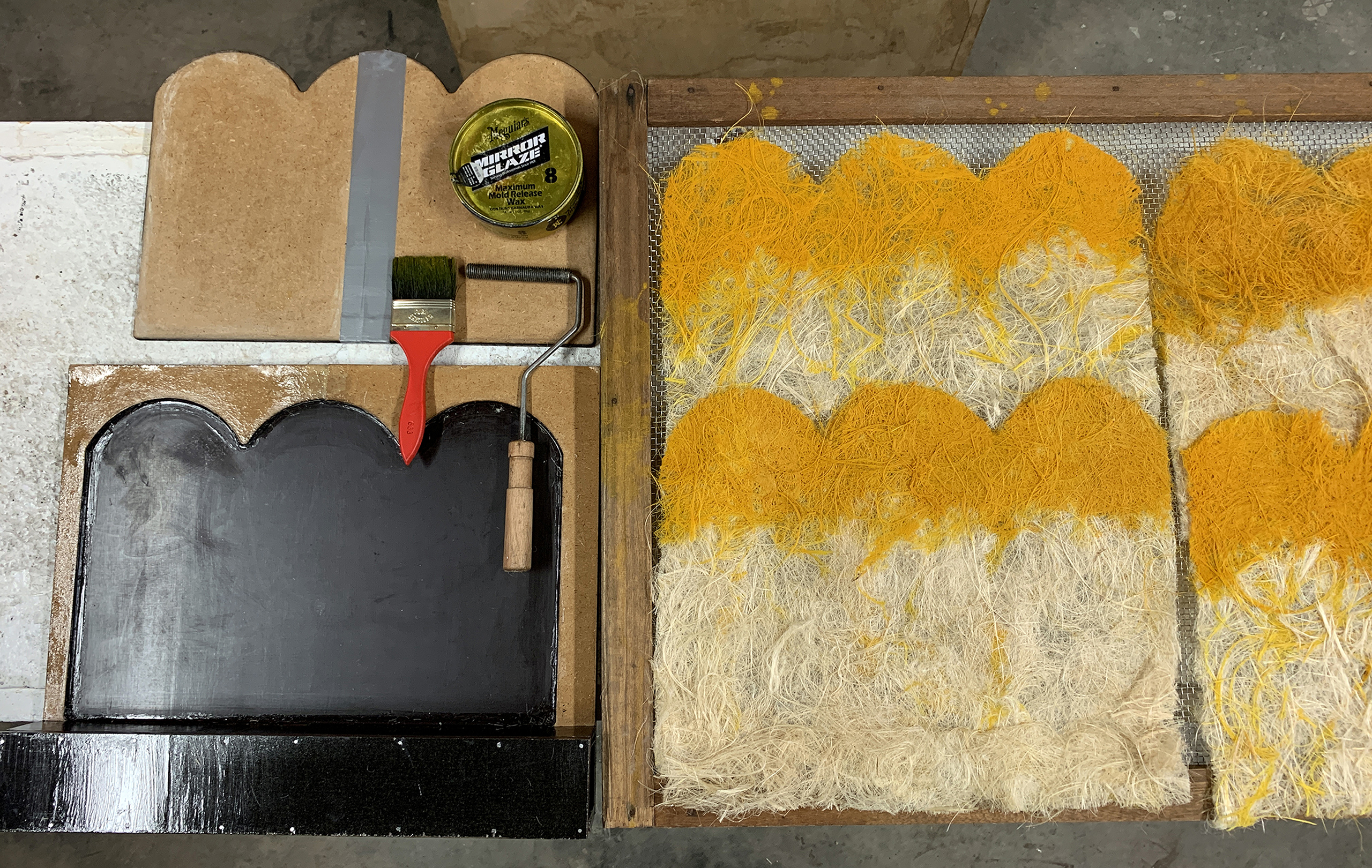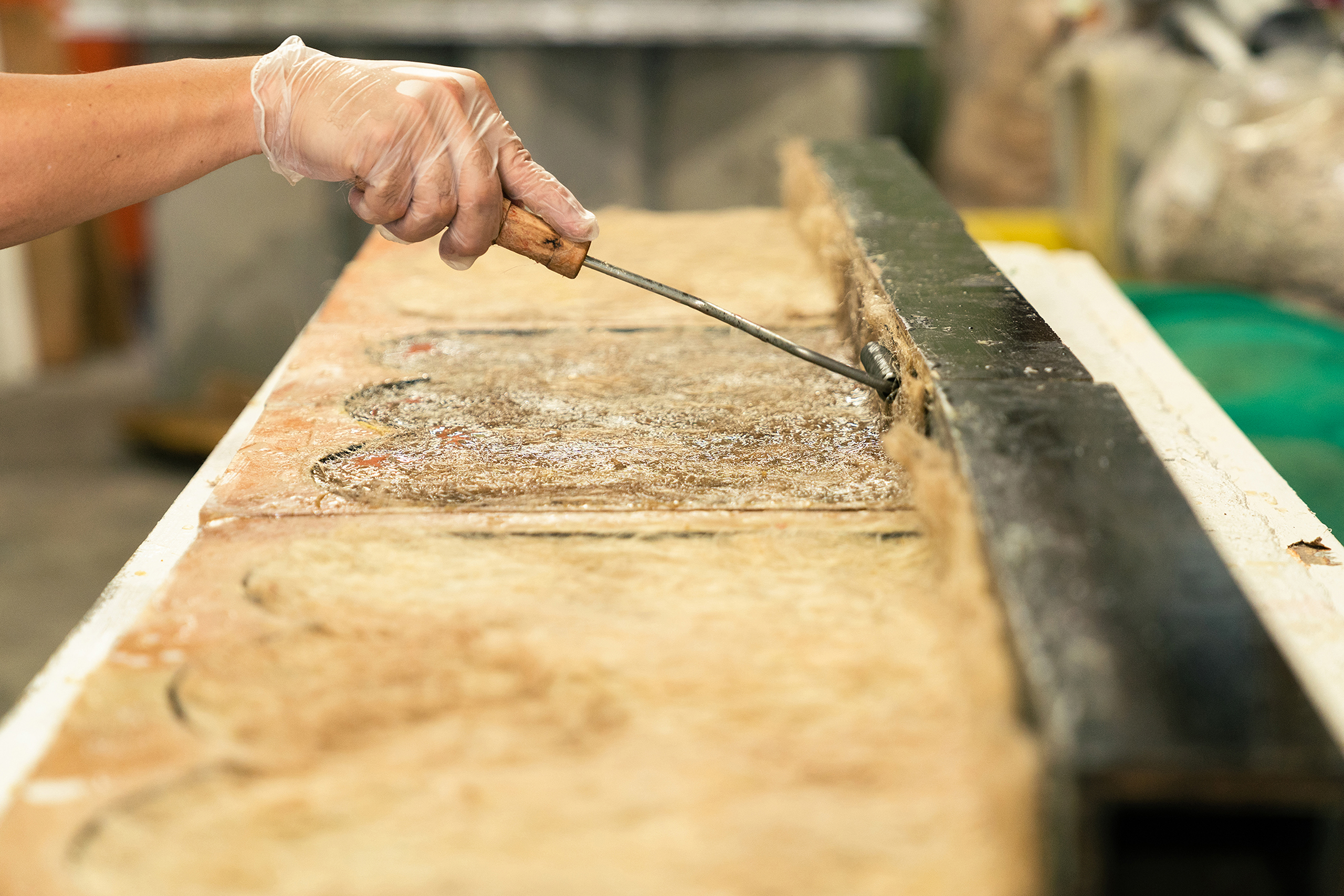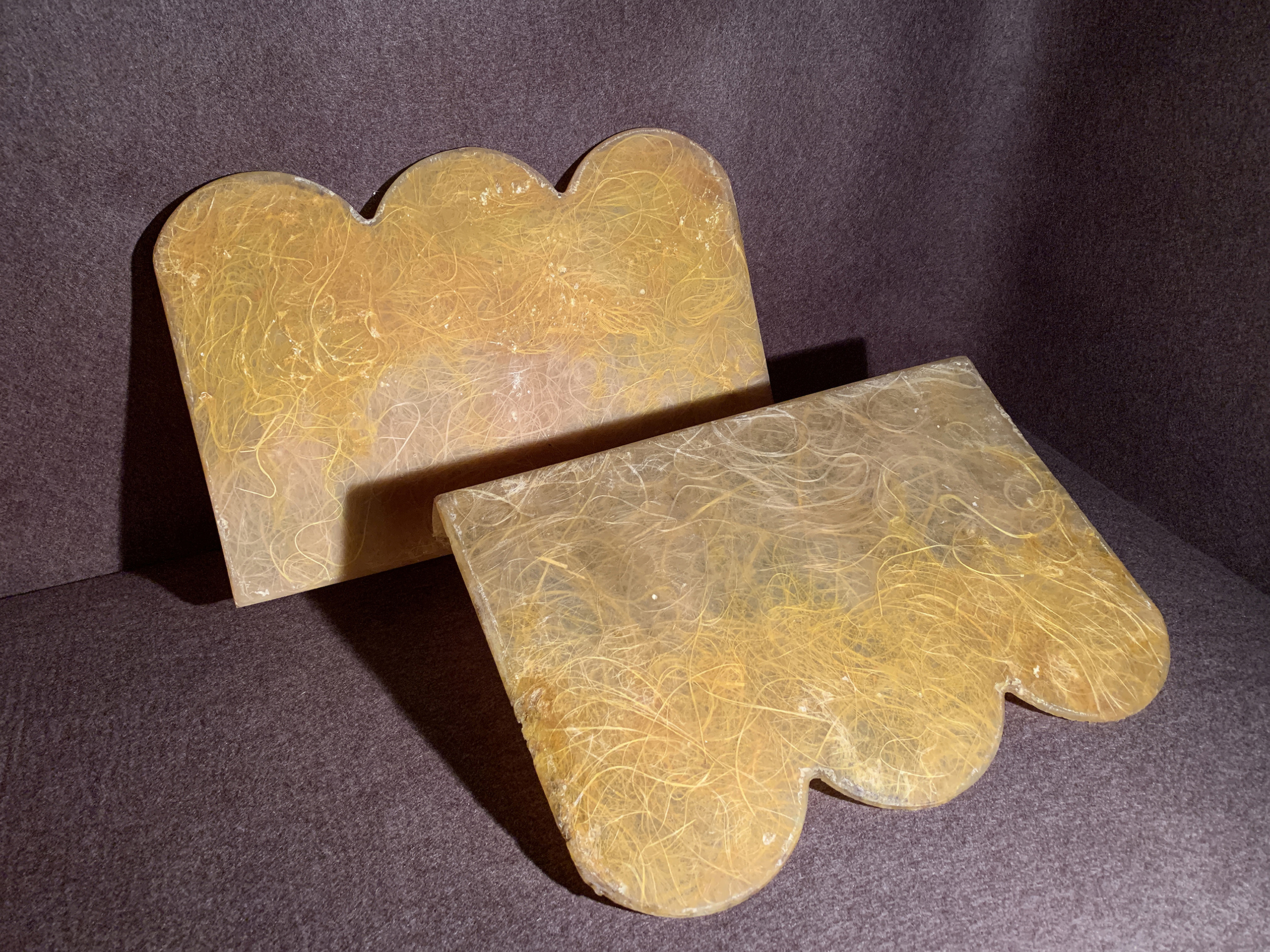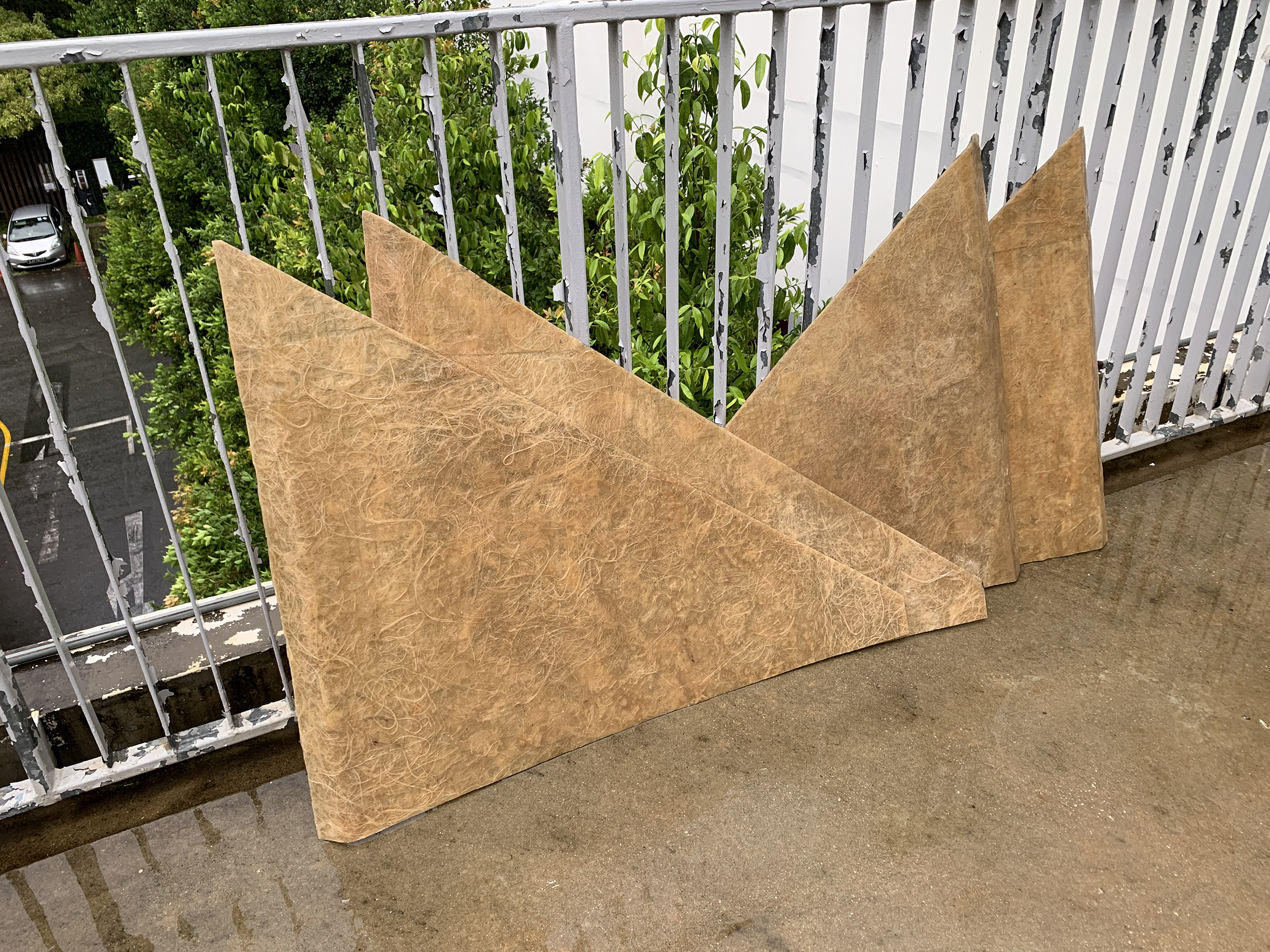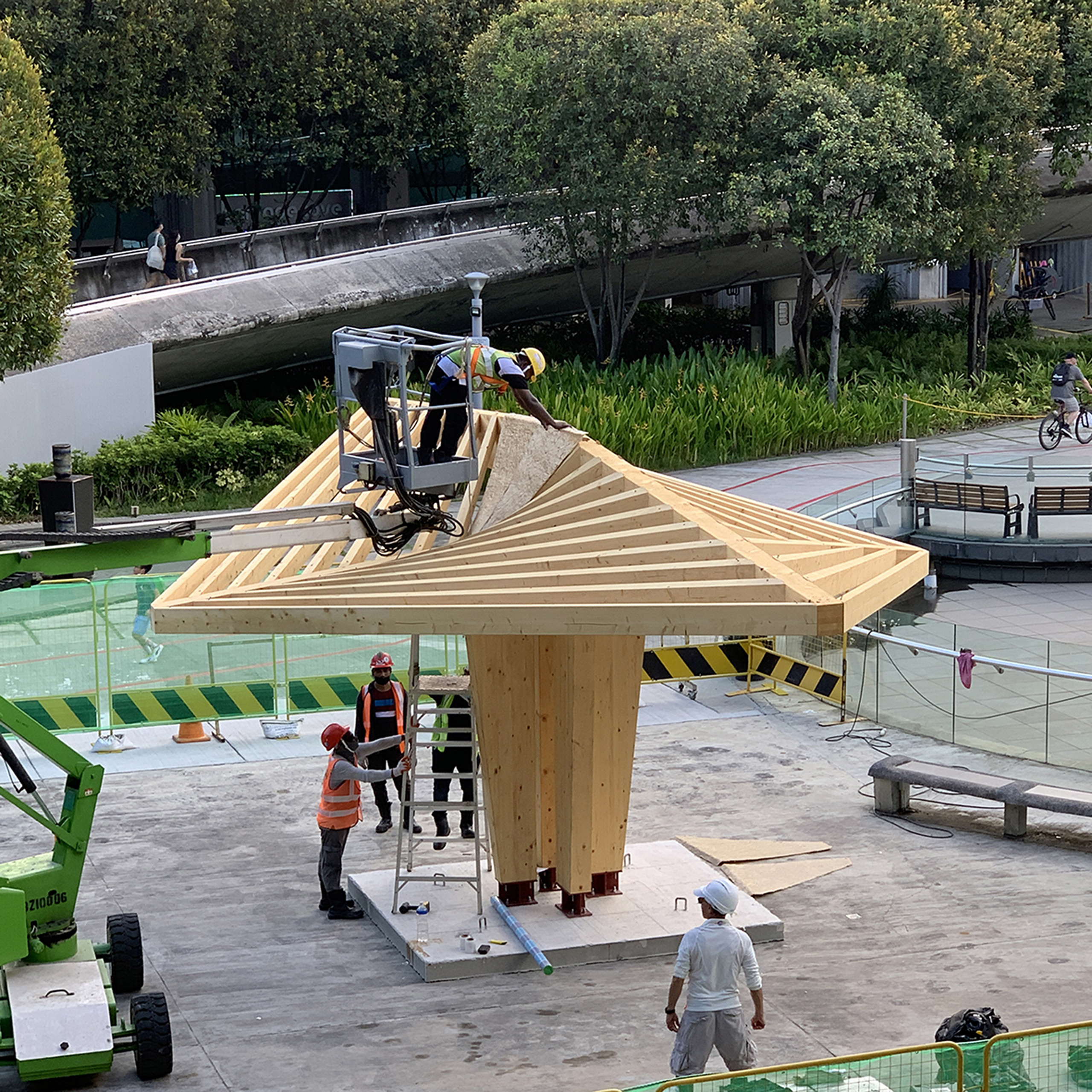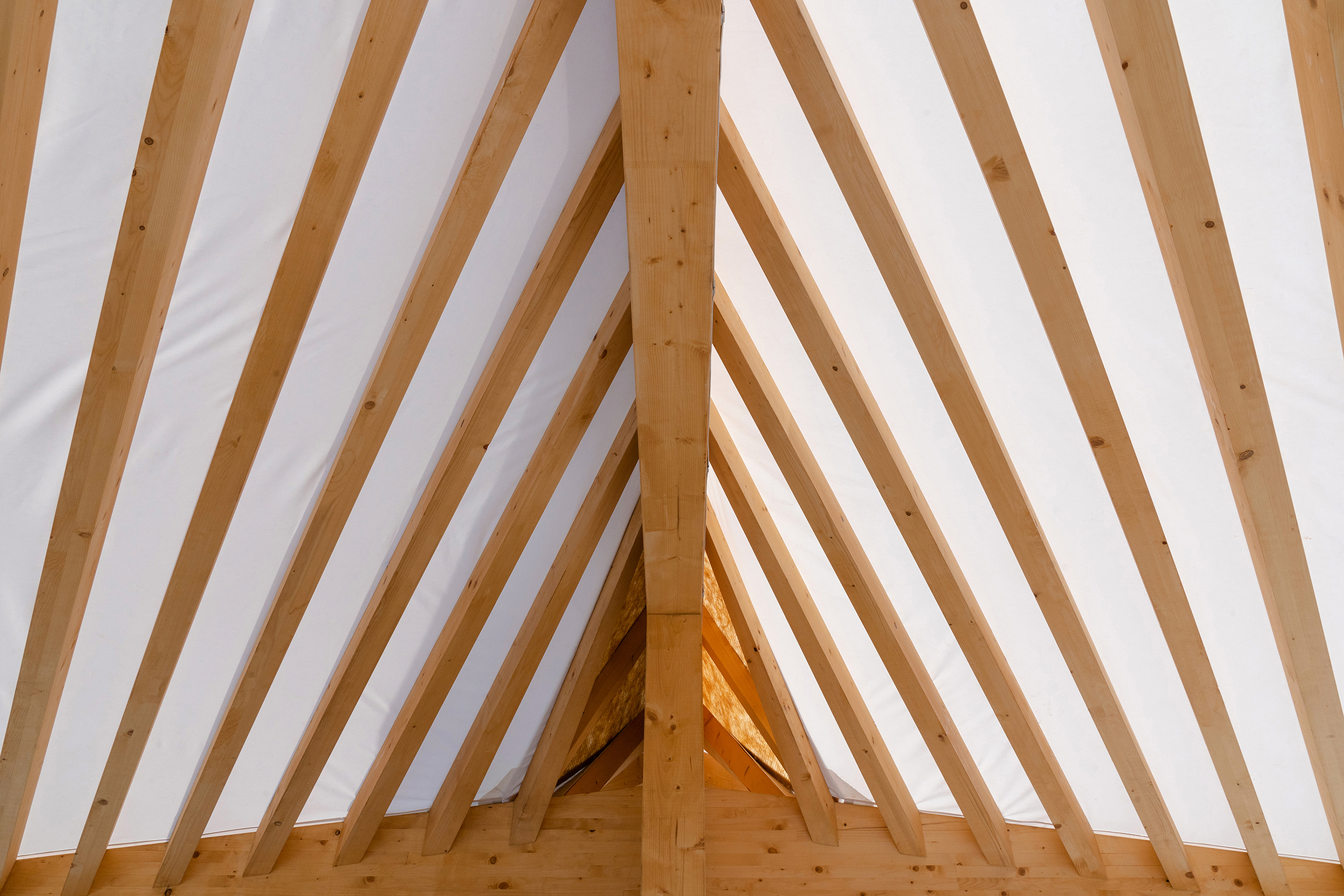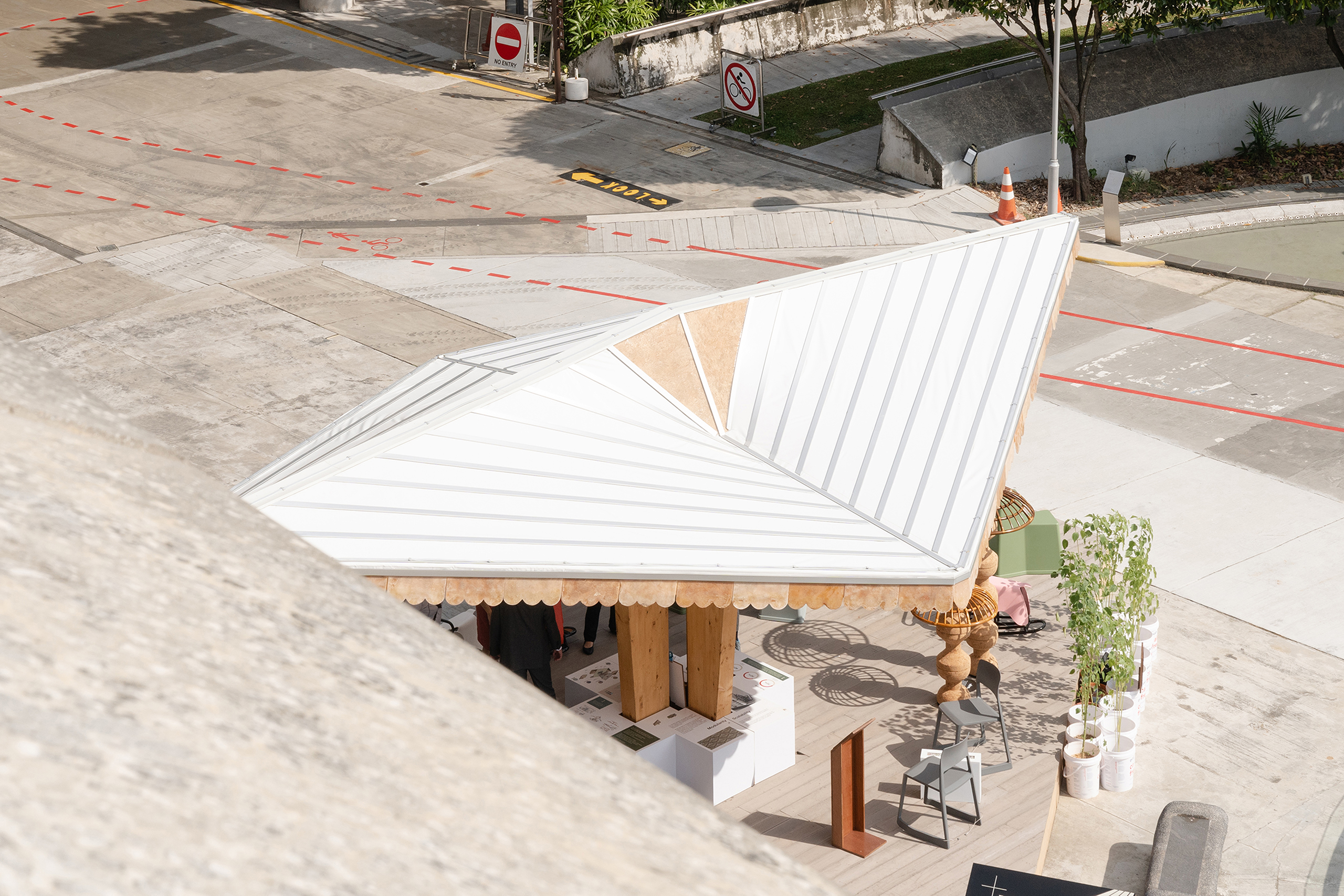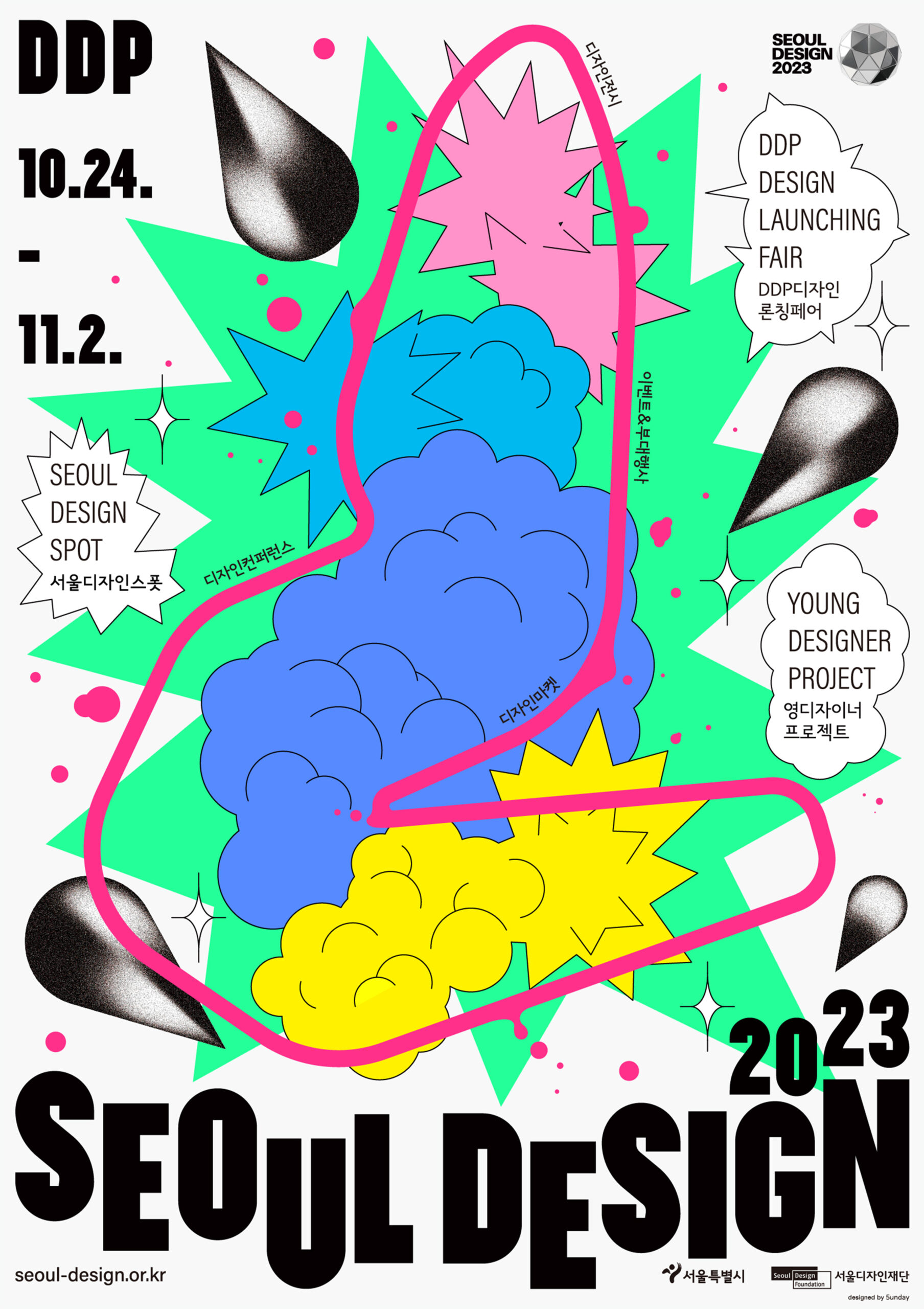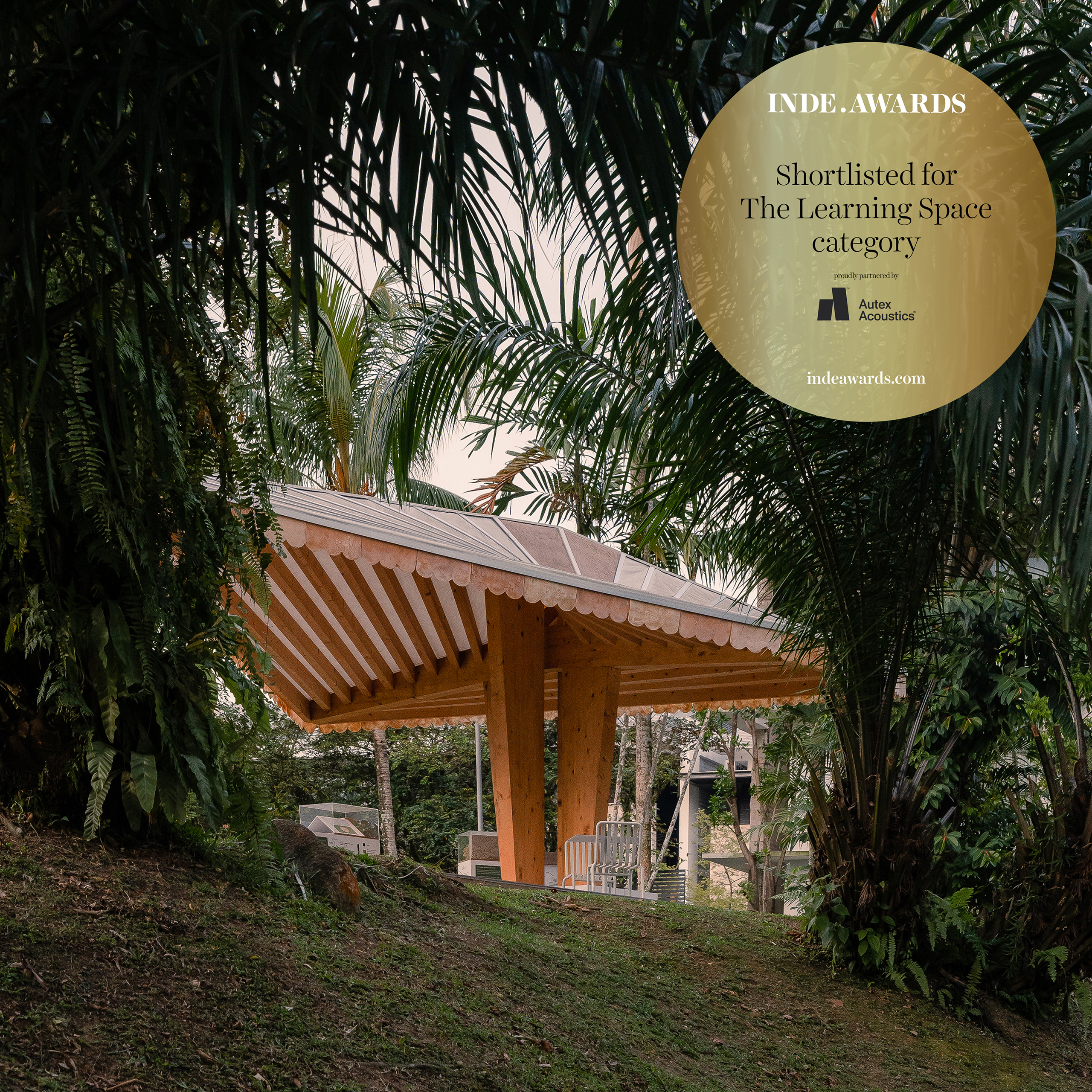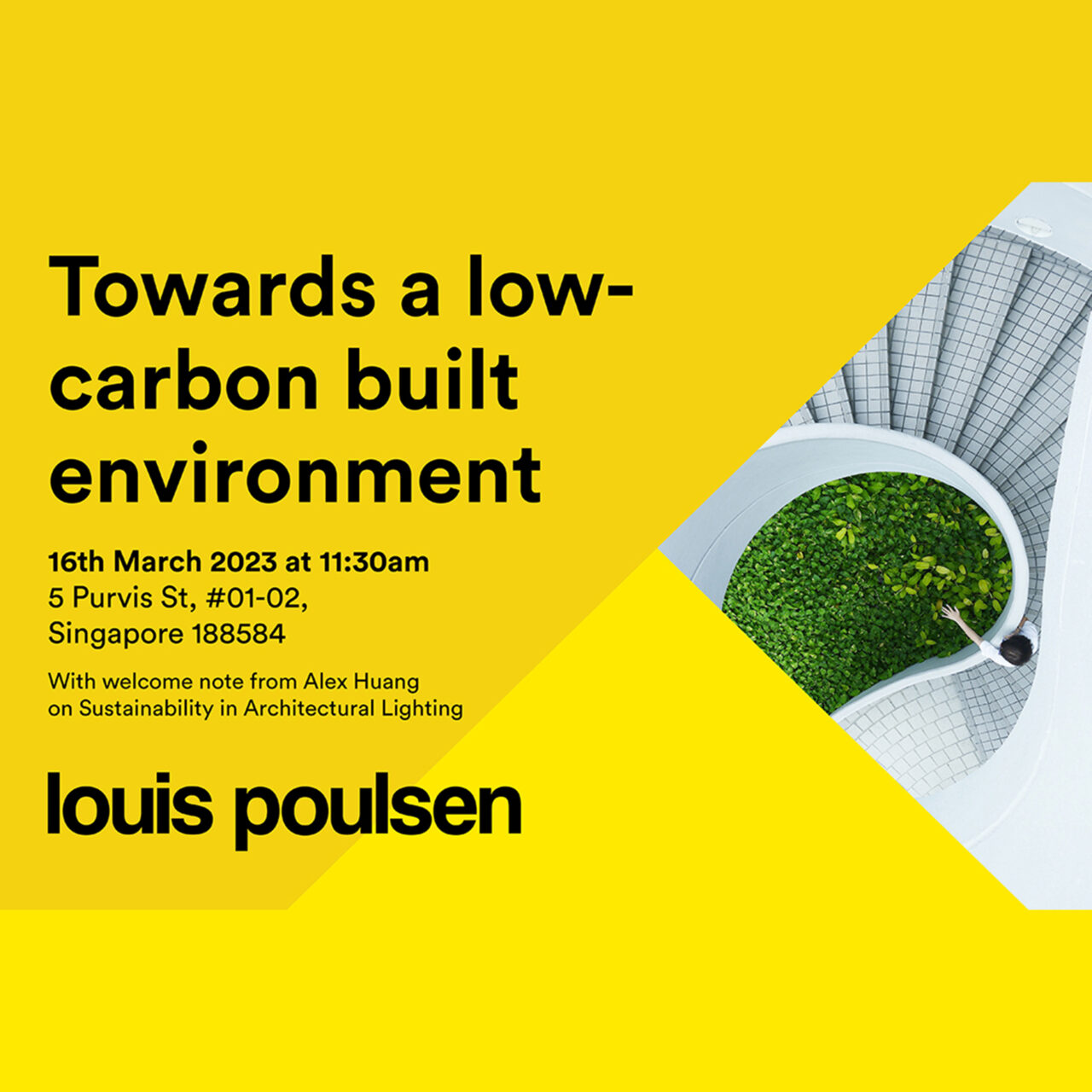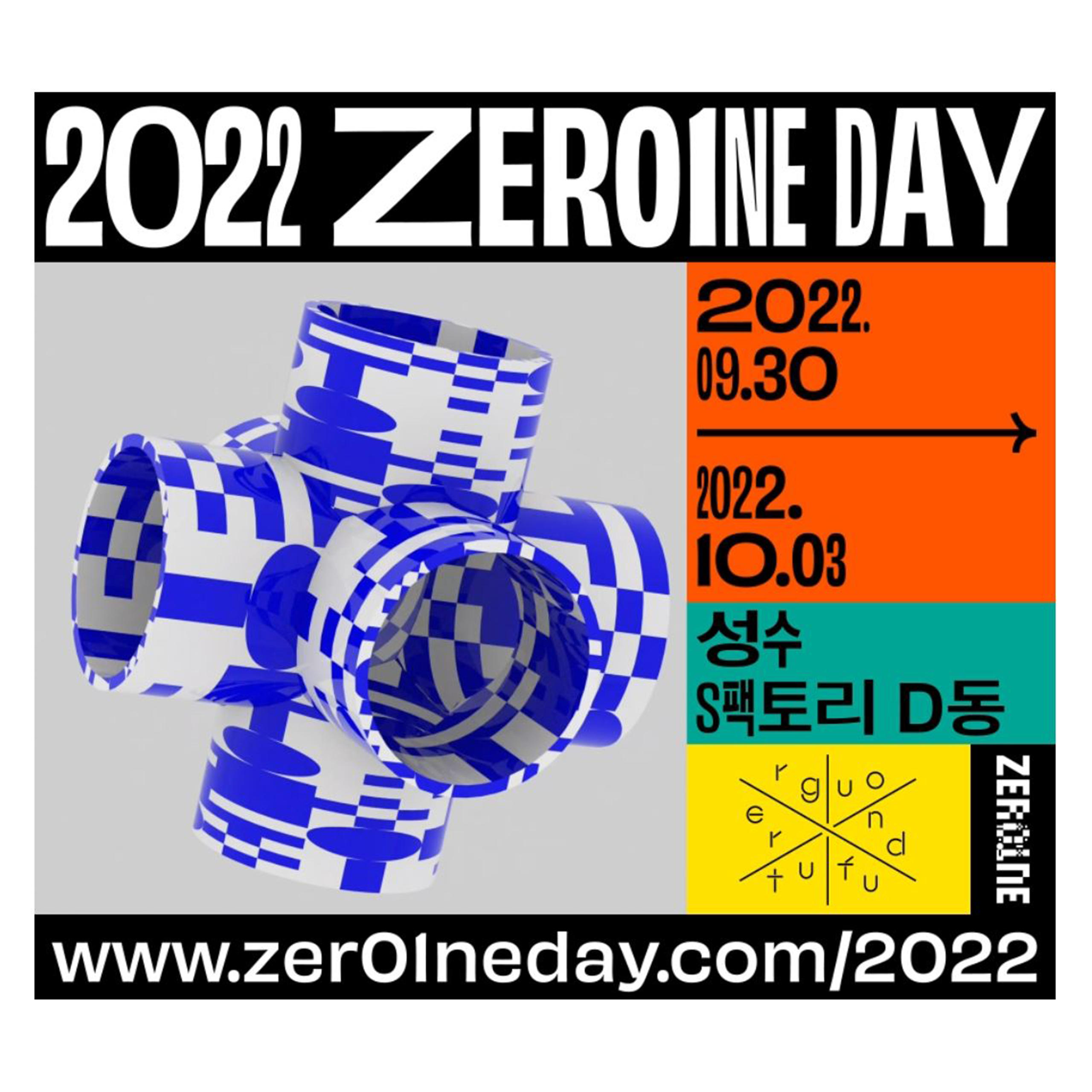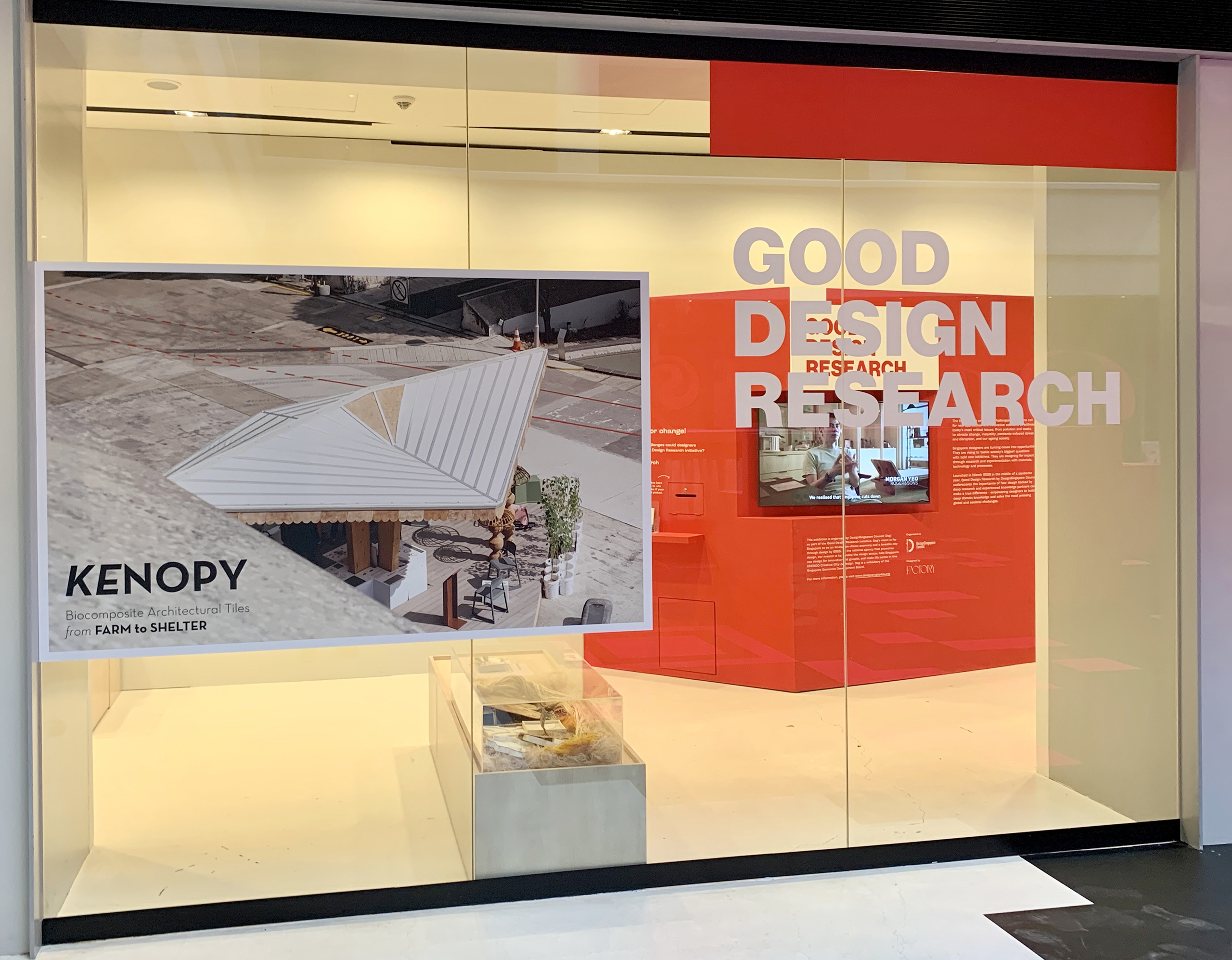Kenopy
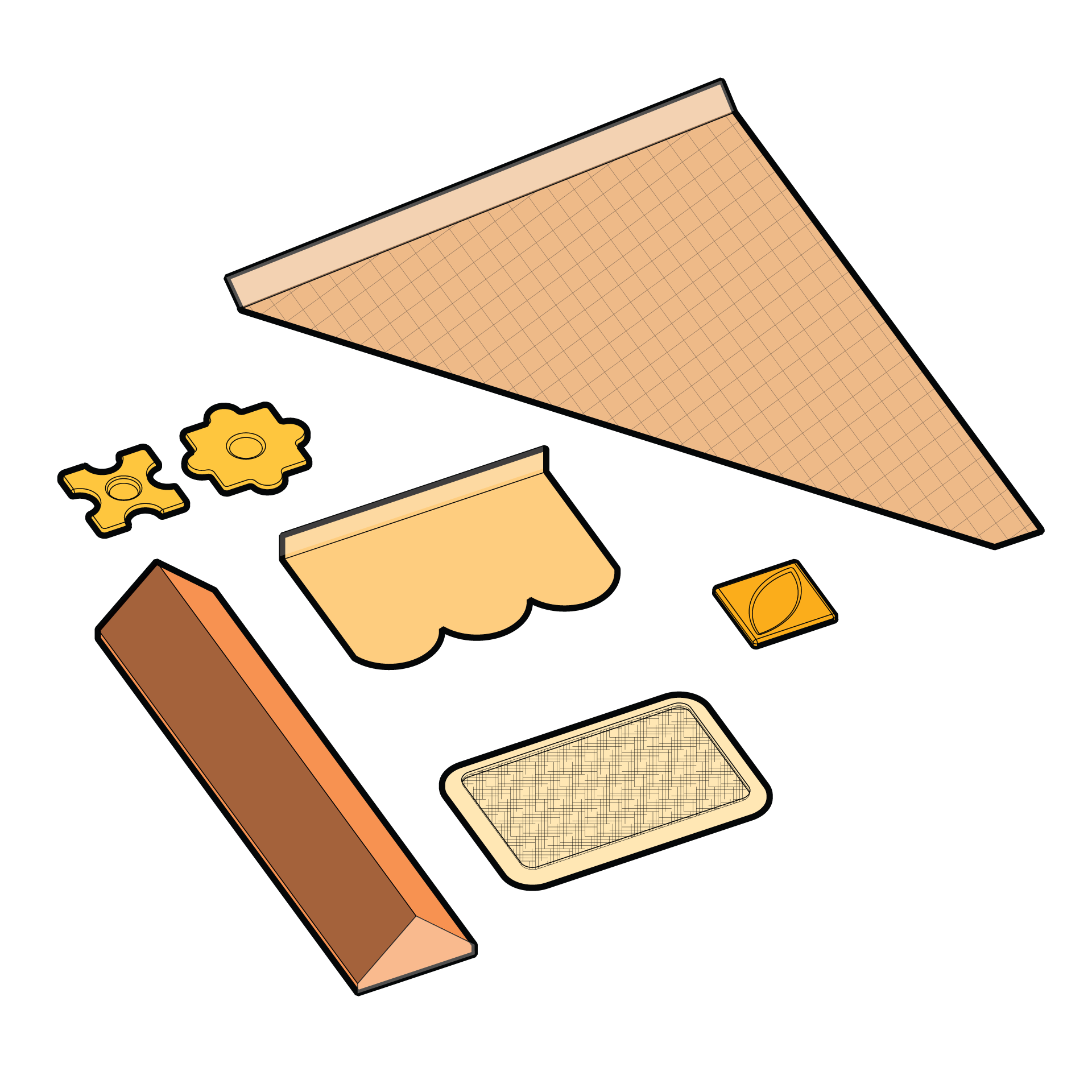
| Client | Good Design Research Grant by DesignSingapore |
| Program | Material Research |
| Status | Completed |
| Team Members | Kevin Lim |
| Ashwin Bafna | |
| Partner | AfforableAbodes – Tim Tan |
| Mentor | Tai Lee Siang |
| Fabrication | Studio SKLIM |
| AffordableAbodes | |
| Lighting Collaborator | 42 Degrees Asia |
| Photography | Ong Chan Hao / Studio SKLIM / AffordableAbodes |
| Year of Completion | 2022 |
Kenopy is a bio-composite roofing tile made from Kenaf fibres. We seek to create sustainable architectural tiles from “farm to shelter”.
Kenopy, is a research project that develops biocomposites made from kenaf (also known as Hibiscus cannabinus L, a rapidly grown tropical multipurpose plant) plant fibres. We progress through material explorations and accumulated ‘techne’ to produce progressive fabrication iterations and design prototypes
By using renewable plant fibres, the project hopes to play a sustainable part in reducing the carbon footprint of the built environment with this alternative material.
For the first time in Singapore, kenaf fibre biocomposites are being used as roofing elements for a sustainable pavilion in Singapore in the form of mesh reinforced skylights and roof eave shingles.
Kenaf is a non-wood lignocellulosic material. They are formed mainly by cellulose, hemicelluloses and lignin. It grows to 2.5 m – 6m tall with a woody base within 5 months. Kenaf fibres are viable alternative material for producing biocomposites because of their fast-growing properties, which allows a large volume of raw materials to be delivered in a short period. An acre of Kenaf produces 5 to 8 tons of raw plant bast fibres and core fibres in a single growing season. In contrast, an acre of forest produces 1.5 to 3.5 tons of usable fibre per year.
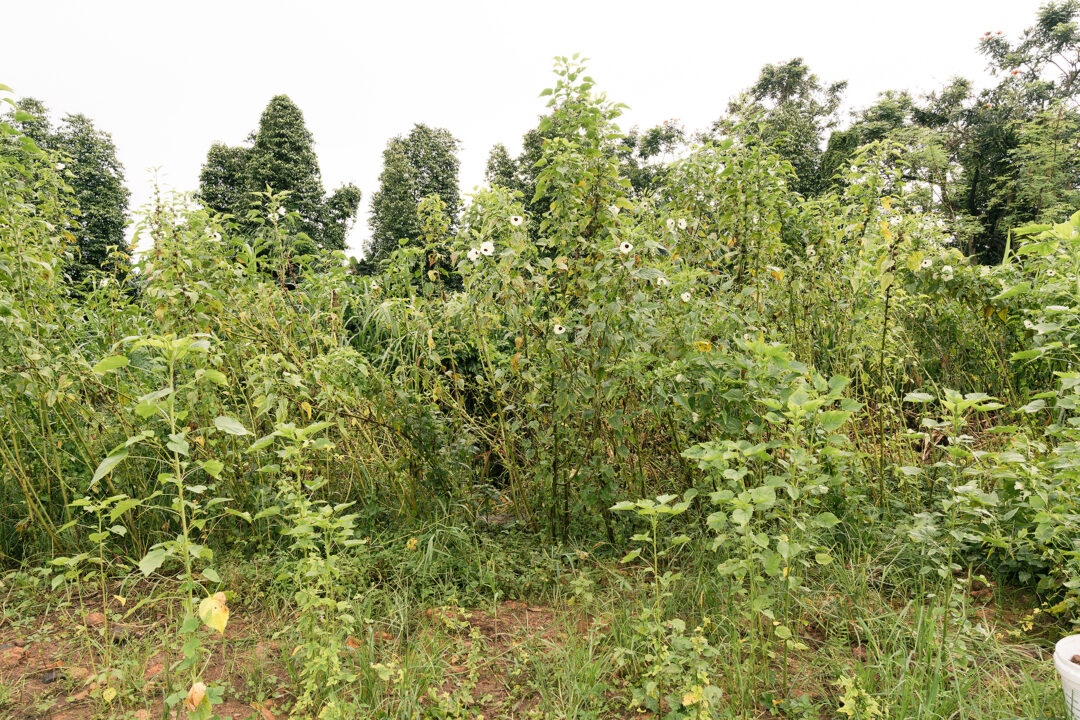
Conventional synthetic materials (like glass fibre, carbon fibre) are good reinforcing materials for biocomposites. However, they are non-renewable and much costlier. The usage of these fibres as reinforcement is more economical, has both renewable & recyclable attributes, and absorbs more CO2 than any other crop.
Singapore is constructing 150 km of sheltered linkways by 2040 (source: LTA 2040 Masterplan). The existing set of materials used for shelter construction are non-renewable and generate a significant amount of greenhouse gases. With the advent of Kenaf fibre biocomposites, there is the potential to substitute non-renewable materials and move towards a carbon neutral built environment.
Tiles were developed by first fabricating the interior surface tiles, followed by transformative tiles, and finally by light panels. Various enhancers (like fire retardant epoxy, kenaf chips) were added to develop better durable external tiles. Finally, external roof eaves shingles & mesh reinforced central skylights were fabricated for use at a sustainable pavilion in Singapore. The fabrication of Kenopy tiles involves 9 stages which includes matting the fibres and vacuum forming into moulds. This includes interior tiles, transformative tiles, light feature panels and exterior roofing.
Interior Surface Tiles
These tiles are the first basic interior tiles fabricated. Various natural dyes like turmeric powder, beetroot, blue pea flowers, were experimented with to check the quality of staining on Kenaf fibres. It was concluded that staining from turmeric powder yields the brightest and most vibrant hues. 3D printed moulds were used to create the base form for Kenaf fibres and matrix, which were vacuumed-formed before they took permanent shape.
Interior Transformative Tiles
Kenaf fibres have the inherent flexibility to take up most shape from the moulds. This allows the fibres to be fabricated in multiple geometries. Transformative tile explores interlocking motifs with separate tiles.
Interior Light Panels
The unique property of Kenopy to flaunt its fibres and filter light, empowers a cafe in Singapore to use biocomposite materials as light panels. To achieve the various shades of yellow to orange hues, a mixture of organic dyes made from beetroot, turmeric and krill extracts were used to soak the Kenaf fibres. These light panels were to showcase our design theme of ‘colour spectrums derived from the ripening and roasting process of coffee fruits and beans’. When backlit, these panels shows the juxtaposition of natural fibres in clarity, adding to the cosy ambience of the cafe.
Fire Retardancy + Water Resistance + Buoyancy
A preliminary performative fire test was conducted on Kenopy tiles. These tiles were fabricated with fire retardant resin and performed satisfactorily. However, fabricating with this resin made the panel opaque.
Kenaf fibres are lightweight and low in density. This makes the finished panels buoyant and the combination with the matrix creates water resistancy.
Exterior Sandwiched Kenaf Chips Tiles
These sandwich panels were fabricated with dry Kenaf stem chips lodged between 2 layers of fibre mats. The Kenaf chips improve the overall thermal insulation of the panel.
Exterior Roof Eave Shingles
These exterior shingles line the perimeter roof edge of the +Pavilion. The scallop shape and water resistant quality prevent the backflow of rainwater onto the glulam structure.
Exterior Mesh Reinforced Central Skylights
4 panels each measuring 1275 mm by 880 mm are the largest roof panels we have fabricated to date. To reduce warpage and increase stability of these large panels, the fibres were reinforced with metal mesh. The translucent mesh reinforced skylights allow light to filter through the central space of the +Pavilion, creating a warm glow.
